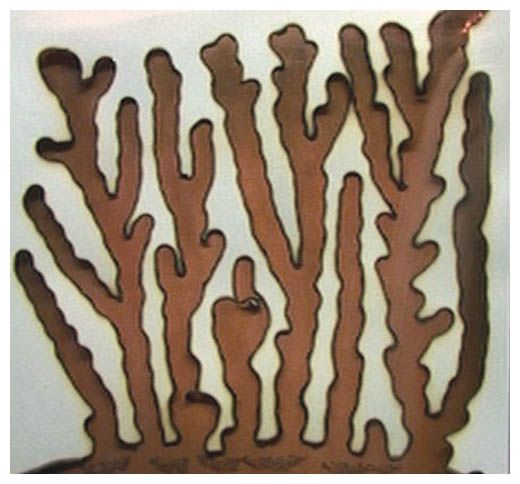Fire in Microgravity

In microgravity, flames given so little oxygen that on Earth they would extinguish, do not go out but break up into tiny, two-dimensional caps called flamelets. Much like smoldering coals in a banked hearth, these flamelets can persist for long periods under near-limit conditions and, if oxygen is reintroduced, ignite a larger flame, with serious implications for fire safety on space missions.
A test performed on a sample in a narrow channel apparatus at Michigan State University shows a series of continuous bifurcations and extinctions. The flamelets optimize the distance between one another depending on the oxygen level, a resource that they are essentially competing for. The width of each flamelet finger scales with heat losses to the surface, whereas the space between fingers scales with both oxygen flow rate and heat losses.
https://www.americanscientist.org/issues/feature/2016/1/fire-in-microgravity/1
